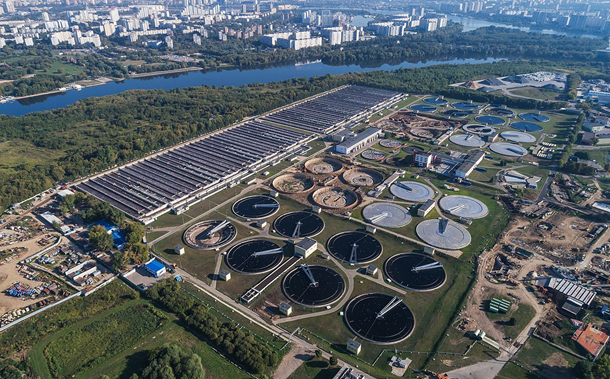Macroscopic Traffic Characterization Based on Distance Headway
Downloads
Doi:10.28991/CEJ-2024-010-12-016
Full Text:PDF
Downloads
[2] Tomtom. (2024). TomTom traffic index. Tomtom, Amsterdam, Netherlands. Available online: https://www.tomtom.com/traffic-index/ranking/ (accessed on November 2024)
[3] Forsyth, J. (2015). U.S. commuters spend about 42 hours a year stuck in traffic jams. Reuters, London, United Kingdom. Available online: https://www.reuters.com/article/us-usa-traffic-study/u-s-commuters-spend-about-42-hours-a- year-stuck-in-traffic-jams-idUSKCN0QV0A820150826 (accessed on November 2024).
[4] Li, X., Cui, J., An, S., & Parsafard, M. (2014). Stop-and-go traffic analysis: Theoretical properties, environmental impacts and oscillation mitigation. Transportation Research Part B: Methodological, 70(1), 319–339. doi:10.1016/j.trb.2014.09.014.
[5] Kotsialos, A., Papageorgiou, M., Diakaki, C., Pavlis, Y., & Middelham, F. (2002). Traffic flow modeling of large-scale motorway networks using the macroscopic modeling tool METANET. IEEE Transactions on Intelligent Transportation Systems, 3(4), 282–292. doi:10.1109/TITS.2002.806804.
[6] Jin, W., & Zhang, H. M. (2001). Solving the Payne-Whitham traffic flow model as a hyperbolic system of conservation laws with relaxation. University of California Davis, Davis, CA, USA.
[7] Coclite, G. M., Karlsen, K. H., & Risebro, N. H. (2024). A nonlocal Lagrangian traffic flow model and the zero-filter limit. Zeitschrift Fur Angewandte Mathematik Und Physik, 75(2), 443–453. doi:10.1007/s00033-023-02153-z.
[8] Khan, Z. H., Imran, W., Azeem, S., Khattak, K. S., Gulliver, T. A., & Aslam, M. S. (2019). A macroscopic traffic model based on driver reaction and traffic stimuli. Applied Sciences (Switzerland), 9(14), 2848. doi:10.3390/app9142848.
[9] Gani, M., Hossain, M., & Andallah, L. (2012). A finite difference scheme for a fluid dynamic traffic flow model appended with two-point boundary condition. GANIT: Journal of Bangladesh Mathematical Society, 31, 43–52. doi:10.3329/ganit.v31i0.10307.
[10] Perlman, C. (2008). Mathematical modelling of traffic flow at bottlenecks. Master Thesis, Lund University, Lund, Sweden.
[11] Holden, H., & Risebro, N. H. (1995). A mathematical model of traffic flow on a network of unidirectional roads. SIAM Journal on Mathematical Analysis, 26(4), 999–1017. doi:10.1137/s0036141093243289.
[12] Nagatani, T. (2002). The physics of traffic jams. Reports on Progress in Physics, 65(9), 1331–1386. doi:10.1088/0034-4885/65/9/203.
[13] Jin, W. (2003). Kinematic wave models of network vehicular traffic. Ph.D. Thesis, University of California Davis, Davis, CA, USA.
[14] Khan, Z. H., A. Sulehri, Gulliver, T. A., & Imran, W. (2019). On the route choice. Pakistan Journal of Science, 71 (5), 212-215.
[15] Khan, Z. H., Gulliver, T. A., Azam, K., & Khattak, K. S. (2019). Macroscopic model on driver physiological and psychological behavior at changes in traffic. Journal of Engineering and Applied Sciences, 38(2), 57–66.
[16] Papageorgiou, M. (1998). Some remarks on macroscopic traffic flow modelling. Transportation Research Part A: Policy and Practice, 32(5), 323–329. doi:10.1016/S0965-8564(97)00048-7.
[17] Khan, Z. H., & Gulliver, T. A. (2020). A macroscopic traffic model based on transition velocities. Journal of Computational Science, 43(1), 139–150. doi:10.1016/j.jocs.2020.101131.
[18] Wong, G. C. K., & Wong, S. C. (2002). A multi-class traffic flow model - An extension of LWR model with heterogeneous drivers. Transportation Research Part A: Policy and Practice, 36(9), 827–841. doi:10.1016/S0965-8564(01)00042-8.
[19] Chen, J. Z., Shi, Z. K., & Hu, Y. M. (2012). Numerical solutions of a multi-class traffic flow model on an inhomogeneous highway using a high-resolution relaxed scheme. Journal of Zhejiang University: Science C, 13(1), 29–36. doi:10.1631/jzus.C10a0406.
[20] El Ouenjli, H., Chafi, A., & Kammouri Alami, S. (2023). LWR application on calculating travel time in urban arterials with traffic lights. Digital Technologies and Applications. ICDTA 2023. Lecture Notes in Networks and Systems, 668, Springer, Cham, Switzerland. doi:10.1007/978-3-031-29857-8_79.
[21] Zhang, Y., & Yang, X. T. (2024). Discrete macroscopic traffic flow model considering the lane-changing behaviors in the mixed traffic environment. Transportation Research Part C: Emerging Technologies, 164, 104672. doi:10.1016/j.trc.2024.104672.
[22] Loh, S. C., & Suhana Jamaian, S. (2022). The higher order macroscopic traffic flow models in reproducing stop-and-go phenomenon: Systematic review. Sciences and Technology, 2(1), 443–453. doi:10.30880/ekst.2022.02.01.048.
[23] Jin, W. (2000). Traffic flow models and their numerical solutions. M.S. Thesis, University of California Davis, Davis, CA, USA.
[24] Lubashevsky, I. (2017). Physics of the Human Mind. In Understanding Complex Systems. Springer, Cham, Switzerland. doi:10.1007/978-3-319-51706-3.
[25] Pour, I. M., & Nassiri, H. (2020). A macroscopic traffic flow model that includes driver sensitivity to the number of free spaces ahead. Transportmetrica B, 8(1), 290–306. doi:10.1080/21680566.2017.1377647.
[26] Yperman, I., Logghe, S., & Immers, B. (2005). The link transmission model: An efficient implementation of the kinematic wave theory in traffic networks. Proceedings of the EWGT Meeting, Poznan, Poland.
[27] Ma, X. (2006). Driver modeling based on computational intelligence approaches. Ph.D. Thesis, Royal Institute of Technology, Stockholm, Sweden.
[28] Spiliopoulou, A., Kontorinaki, M., Papageorgiou, M., & Kopelias, P. (2014). Macroscopic traffic flow model validation at congested freeway off-ramp areas. Transportation Research Part C: Emerging Technologies, 41, 18–29. doi:10.1016/j.trc.2014.01.009.
[29] Khan, Z. H., Imran, W., Gulliver, T. A., Khattak, K. S., Wadud, Z., & Khan, A. N. (2020). An anisotropic traffic model based on driver interaction. IEEE Access, 8, 66799–66812. doi:10.1109/ACCESS.2020.2985668.
[30] Ali, A., Garcia, G., & Martinet, P. (2013). Minimizing the inter-vehicle distances of the time headway policy for urban platoon control with decoupled longitudinal and lateral control. Proceedings of the International IEEE Conference on Intelligent Transportation Systems, The Hague, Netherlands, 1805–1810. doi:10.1109/itsc.2013.6728490.
[31] Jin, W. L. (2019). Nonstandard second-order formulation of the LWR model. Transportmetrica B, 7(1), 1338–1355. doi:10.1080/21680566.2019.1617803.
[32] Causon, D. M., & Mingham, C. G. (2010). Introductory Finite Difference Methods for PDEs. Ventus Publishing, Erie, CO, USA.
[33] Li, J., Chen, Q. Y., Wang, H., & Ni, D. (2012). Analysis of LWR model with fundamental diagram subject to uncertainties. Transportmetrica, 8(6), 387–405. doi:10.1080/18128602.2010.521532.
- Authors retain all copyrights. It is noticeable that authors will not be forced to sign any copyright transfer agreements.
- This work (including HTML and PDF Files) is licensed under a Creative Commons Attribution 4.0 International License.![]()














